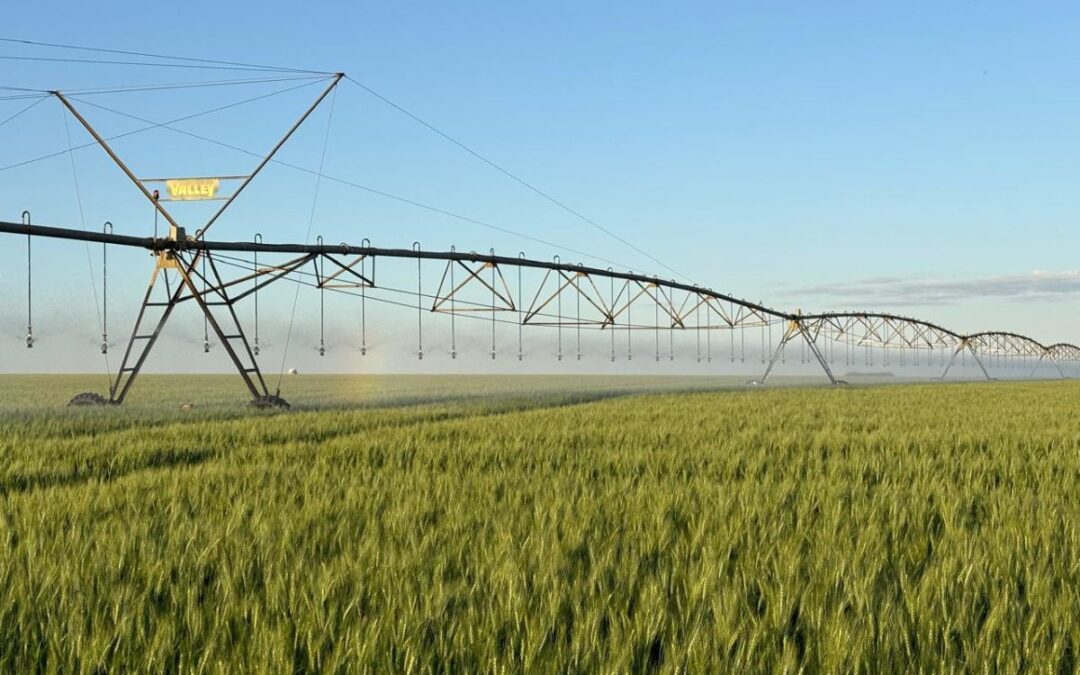The Ministry of Agriculture wants to launch an irrigation promotion program focused on training and inter-ministerial coordination to reduce bottlenecks
A 6 million-hectare increase in the Brazilian irrigated area by 2040 could generate a growth of R$37.1 billion in Brazil’s Gross Domestic Product (GDP). The unprecedented study with the results was presented this Tuesday, the 19th, during the 2nd Workshop “Agricultural Sector and Water Management – Irrigated Agriculture Hubs” organized by the Brazilian Confederation of Agriculture and Livestock (CNA).
The research addresses what new incentive policies could impact the growth of irrigated agriculture. To this end, the researchers drew up what they called a baseline, that is, a constant growth parameter until 2040. If there are no other incentive policies and growth continues at the rates of the last five years (which ranges from 180,000 to 200,000 hectares of irrigated area), Brazil would reach 2040 with 12.1 million hectares of irrigated area (8.5 million hectares currently plus 3.6 million hectares of growth).
However, if new policies are adopted to stimulate irrigation, the country could go from the current 8.5 million hectares to 18.1 million in the most optimistic scenario. The exercise carried out provides projections for two scenarios based on the baseline. In the first scenario, the impact of additional incentive measures would be an additional 4.2 million hectares over the baseline, totaling 16.3 million hectares irrigated. In the second scenario, the increase over the baseline would be 6 million, which would make the country reach 18.1 million irrigated hectares in 2040.
With this, the researchers traced the effects of this growth on the Brazilian economy. In the first scenario, the GDP would increase by R$25.9 billion (0.16%). In the second, the growth would be R$37.1 billion (0.23%). At first, the number may seem low, but when put into perspective, it has a greater impact than other policies, such as the National Energy Plan 2030 (+0.033% over GDP) and the availability of rural credit analyzed from 1999 to 2018 (+0.2% over GDP).
“What we observed is that considering that the increase in irrigated area significantly increases agricultural productivity, we obtain many positive effects, in terms of GDP and also an increase in income in all states, from the poorest to the richest,” says one of the researchers responsible, Joaquim Bento de Souza.
Image: Joaquim Bento de Souza/GPP of Esalq
In the analysis by state or region, the impact is even greater, since in many locations the weight of agricultural activity is greater. This is the case of Mato Grosso do Sul, Mato Grosso and the combined area of Goiás and the Federal District. In the case of MS, the first scenario would result in a growth of 1.29% in the state’s GDP and 1.77% in the hypothesis of the second scenario. In MT, the increases in the state’s Gross Domestic Product would be 1% and 1.44%, respectively. For Goiás and the Federal District, the increases would be 0.73% and 0.97% for the respective scenarios.
Another effect computed is the fall in food prices. Scenario 1 would bring a reduction of around 0.32% in food inflation. In scenario 2, the decline in prices would be 0.45%. According to the researcher, this is due to the increase in productivity, which would generate an increase in domestic supply and consequently a fall in prices.
Rice: crop could expand production by more than 20%
The study also projected how this increase in area would impact the main irrigated crops. To do so, the researchers used the 2019 parameters in which rice (15.9% of the total), sugarcane without fertigation (9.1%) and coffee (5.5%) appear as the main crops with an irrigation system. Based on these numbers, they projected the growth of irrigated areas while maintaining the proportions by crop.
Rice could have a production increase of 29.6% in the most optimistic scenario, while sugarcane could yield an additional 9.1%. Cotton and permanent crops, such as oranges and bananas, could see an increase of over 4% (see table below). Exports could also increase with the growth in the production of these foods.
Image: Joaquim Bento de Souza/GPP of Esalq
MAPA wants to raise awareness in other departments and hopes to launch a development program
The research conducted by the Public Policy Group of Esalq/USP was commissioned by the Ministry of Agriculture and Livestock (MAPA). The intention was to outline the impacts of irrigated agriculture on the socioeconomic aspect in numbers, as explained by the general coordinator of Irrigation and Soil and Water Conservation at Mapa, Gustavo Goretti. “We already knew about this reality, but we didn’t have a specific number, of this socioeconomic impact in the regions,” he says.
The next step is to show other departments in the Esplanade of Ministries that irrigated agriculture brings additional benefits. “The idea is that we can show this to other ministries, such as the Ministry of the Environment, other parts of the Ministry of Integration and Regional Development, and the Ministry of Agrarian Development, and that they can benefit from increased irrigation. […] The producer will be the main beneficiary and demander of credit for implementation, but the entire society around him benefits”, points out Goretti.
In addition, the Ministry of Agriculture, Livestock and Supply’s Department of Innovation, Sustainable Development, Irrigation and Cooperatives is about to launch a program to promote irrigation within the ABC+ Plan, which deals with low-carbon agriculture. The idea is to work on two fronts: coordination with other ministries and, mainly, training.
“The idea is to prioritize training, promoting the technology itself and coordination with other ministries to try to untie the knots that exist for growth”, emphasizes the coordinator. According to him, some details are still missing, such as final approval from Minister Carlos Fávaro for the program to be announced, which has not yet been scheduled.

